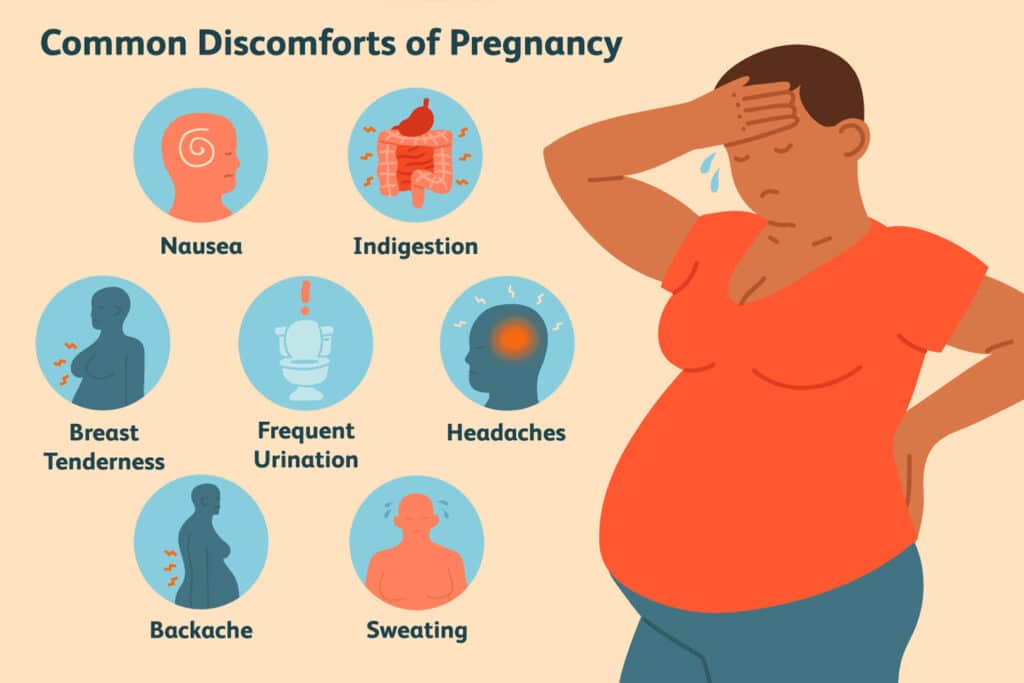
- March 31, 2023
- 2:23 pm
7 Facts About Pregnancy After Tummy Tuck: The Truth Behind the Miracle!
Table of Contents
Curious about pregnancy after a tummy tuck? Discover the truth with our 7 essential facts! Expecting mothers who’ve undergone this cosmetic procedure often have concerns about its impact on their pregnancy journey. In this concise guide, we’ll address these concerns and provide valuable information to help you make informed decisions.
From safety aspects to understanding possible effects on your body and growing baby, this guide is your ultimate resource. Whether you’re planning a pregnancy or already expecting, these eye-opening facts will empower you to embrace pregnancy after tummy tuck confidently. Let’s dive in and uncover the truth behind the miracle!

Pregnancy After Tummy Tuck: Can you get pregnant after a tummy tuck?
Yes, you can get pregnant after a tummy tuck. A tummy tuck, or abdominoplasty, is a cosmetic procedure that removes excess skin and fat from the abdomen and tightens the abdominal muscles. While this surgery does not directly affect your ability to conceive, it is essential to discuss your plans for future pregnancies with your surgeon before undergoing the procedure.
Pregnancy after a tummy tuck can cause the abdominal muscles and skin to stretch, which may affect the appearance of the surgical results. Some women choose to wait until they have completed their families before having a tummy tuck to maintain the results for a more extended period. However, if you do become pregnant after a tummy tuck, it is generally safe for both you and your baby. It is crucial to maintain open communication with your healthcare providers throughout your pregnancy to ensure proper care and support.
What happens if you get pregnant after a tummy tuck?
If you get pregnant after a tummy tuck, there are a few potential outcomes to be aware of:
- Stretching of the abdominal muscles and skin: During pregnancy, your abdominal muscles and skin will naturally stretch to accommodate your growing baby. This stretching can potentially impact the appearance of your tummy tuck results, causing the abdomen to lose some of its firmness and tightness.
- Altered surgical results: While the tummy tuck results may not be completely reversed, the changes to your body during pregnancy can lead to a less toned and contoured appearance compared to your post-surgery outcome.
- Possible discomfort: Some women may experience discomfort or tightness in their abdomen due to the stretching of the skin and muscles. This is typically manageable and not harmful to the pregnancy.
- Safe pregnancy: In general, becoming pregnant after a tummy tuck is safe for both the mother and the baby. However, it is crucial to maintain open communication with your healthcare providers throughout your pregnancy to ensure proper care and support.
Does pregnancy undo tummy tuck?
Pregnancy does not necessarily undo a tummy tuck completely, but it can impact the results. During pregnancy, your abdominal muscles and skin will stretch to accommodate your growing baby. This stretching can cause the previously tightened muscles and skin to loosen, potentially altering the appearance and contour achieved by the tummy tuck.
The extent to which pregnancy impacts your tummy tuck results can vary depending on factors such as genetics, the size of your baby, weight gain during pregnancy, and the quality of your skin elasticity. Some women may experience minimal changes, while others may see more significant alterations in their abdominal appearance.

Is it painful to get pregnant after tummy tuck?
It is generally not painful to get pregnant after a tummy tuck. However, some women may experience discomfort or a sensation of tightness in their abdomen as the skin and muscles stretch to accommodate the growing baby. The extent of discomfort can vary from person to person and may depend on factors such as individual pain tolerance, the degree of muscle tightening during the tummy tuck, and the amount of weight gained during pregnancy.
If you experience significant pain or discomfort during pregnancy after a tummy tuck, discussing these symptoms with your healthcare provider is essential. They can help determine if the pain is related to the tummy tuck or if another issue causes it, and they can recommend appropriate treatment options to alleviate your discomfort.

Does a tummy tuck affect uterus?
A tummy tuck, or abdominoplasty, is a cosmetic procedure that primarily targets the abdominal muscles, excess skin, and fat in the abdomen. It does not directly affect the uterus, as the surgery focuses on the external layers of the abdominal wall.
During a tummy tuck, the surgeon tightens the abdominal muscles and removes excess skin and fat to create a smoother, more contoured appearance. As an internal organ, the uterus is not involved in the procedure and is not directly impacted by the surgery.
How many month after a tummy tuck can you get pregnant?
There isn’t a strict timeline for when you can get pregnant after a tummy tuck, but most surgeons and healthcare providers recommend waiting at least six months to one year after the surgery before trying to conceive. This waiting period allows your body to heal completely, ensuring that the abdominal muscles and skin have sufficient time to recover and regain strength.
It is essential to discuss your plans for future pregnancies with your surgeon before undergoing a tummy tuck. They can provide personalized guidance and recommendations based on your unique circumstances and medical history. Additionally, remember that pregnancy can impact the results of a tummy tuck, as the abdominal muscles and skin may stretch during pregnancy, altering the appearance of your abdomen.
When planning for pregnancy, always consult your healthcare provider to ensure that you and your baby receive the proper care and support throughout the process.
What I wish I knew before getting a tummy tuck?
Before getting a tummy tuck, being well-informed about the procedure, recovery, and potential outcomes is helpful. Here are some key points that you might wish you knew before getting a tummy tuck:
- Realistic expectations: A tummy tuck can significantly improve your abdomen’s appearance, but it’s crucial to have realistic expectations about the results. It’s not a substitute for weight loss or a healthy lifestyle.
- Scarring: Incisions made during the surgery will leave scars, which will fade over time but may never disappear entirely. Your surgeon will try to place the incisions in discreet locations, but it’s essential to be aware that some scarring is inevitable.
- Recovery time: Full recovery from a tummy tuck may take several weeks to months. You’ll need to plan for time off work and make arrangements for help with daily activities, especially during the initial stages of recovery.
- Pain and discomfort: You may experience pain and discomfort after the surgery, which can usually be managed with prescribed pain medication. Following your surgeon’s instructions for pain management and wound care is essential.
- The importance of choosing the right surgeon: Ensure your surgeon is board-certified and experienced in performing tummy tucks. Research their background, ask for patient testimonials, and review before-and-after photos to gauge their expertise.
- Potential complications: As with any surgery, there are potential complications associated with a tummy tuck. These may include infection, bleeding, poor wound healing, skin sensation changes, and anesthesia complications. It is important to discuss the risks with your surgeon and understand how they will handle any potential complications.
- Maintaining results: The results of a tummy tuck can be long-lasting, but it’s essential to maintain a stable weight and live a healthy lifestyle to preserve the results. Significant weight fluctuations or pregnancy can impact the appearance of your abdomen after the procedure.
- Cost: Tummy tucks can be expensive, and insurance typically does not cover the cost of this cosmetic procedure. Be prepared to cover the cost of the surgery, anesthesia, and any additional expenses related to recovery.
- Follow-up care: You will have follow-up appointments with your surgeon to monitor your progress and ensure proper healing. Attending these appointments and following your surgeon’s instructions is essential for optimal recovery and results.
- Emotional impact: Be prepared for the emotional ups and downs accompanying the recovery process. It’s common to experience a range of emotions, including excitement, anxiety, and impatience, as your body heals and you adjust to your new appearance. Having a support system in place and being patient with yourself can help make the recovery process smoother.
| Key Point | Information |
|---|---|
| Realistic Expectations | Tummy tucks are not a substitute for weight loss or a healthy lifestyle; have realistic expectations for results. |
| Scarring | Incisions made during surgery will leave scars that fade over time but may not disappear completely. |
| Recovery Time | Full recovery may take several weeks to months; plan for time off work and help with daily activities during recovery. |
| Pain and Discomfort | Expect post-surgery pain and discomfort, managed with prescribed pain medication; follow surgeon’s instructions for wound care. |
| Choosing the Right Surgeon | Ensure your surgeon is board-certified and experienced in tummy tucks; research their background and review before-and-after photos. |
| Potential Complications | Complications may include infection, bleeding, poor wound healing, changes in skin sensation, and anesthesia-related issues; discuss risks with surgeon. |
| Maintaining Results | Preserve results by maintaining a stable weight and living a healthy lifestyle; weight fluctuations or pregnancy can impact appearance after surgery. |
| Cost | Tummy tucks can be expensive, and insurance typically does not cover the cost; be prepared to cover surgery, anesthesia, and recovery expenses. |
| Follow-up Care | Attend follow-up appointments with your surgeon to monitor progress and ensure proper healing; follow |
FAQ
Is tummy tuck more painful than childbirth?
It is difficult to compare the pain levels of a tummy tuck and childbirth directly, as the experiences are very different and depend on individual factors such as pain tolerance, the specifics of the tummy tuck procedure, and the nature of the childbirth (vaginal delivery, C-section, or with/without pain relief).
A tummy tuck, or abdominoplasty, is a surgical procedure that involves tightening the abdominal muscles, removing excess skin and fat, and may cause pain and discomfort during the recovery process. The pain is usually manageable with prescribed pain medication and tends to decrease over time as the body heals.
Childbirth, on the other hand, involves intense pain during labor, which varies in intensity and duration depending on factors like the position of the baby, the mother’s pain tolerance, and whether pain relief options are used. For some women, labor pain may be more intense and difficult to manage than the post-surgery pain experienced after a tummy tuck.
Ultimately, the pain experienced during both a tummy tuck recovery and childbirth is subjective and varies from person to person. It is essential to discuss your concerns about pain with your healthcare providers, who can help you understand the potential pain levels and offer guidance on managing pain during both processes.
Does a tummy tuck change your pubic area?
A tummy tuck, or abdominoplasty, primarily focuses on the abdominal area, but it can result in some changes to the pubic area as well. During the procedure, the surgeon removes excess skin and fat from the lower abdomen and tightens the abdominal muscles, which can have an indirect impact on the appearance of the pubic area.
Some changes that may occur in the pubic area after a tummy tuck include:
- Lifting of the mons pubis: The mons pubis, or the fatty tissue over the pubic bone, may appear lifted after a tummy tuck due to the removal of excess skin and the overall tightening of the abdominal area.
- Change in the position of the pubic area: As the excess skin is removed and the remaining skin is pulled downward, the pubic area may appear to be in a slightly higher position than before the surgery.
- Improved contour: The overall contour and appearance of the pubic area may be improved as a result of the tummy tuck, making it appear more aesthetically balanced with the rest of the abdominal area.
If you have concerns about how a tummy tuck might affect the appearance of your pubic area, it is essential to discuss these concerns with your surgeon during the consultation process. They can provide you with more information about the potential changes and help you decide whether a tummy tuck is a right choice for you.
Which is worse C-section or tummy tuck?
Labeling one procedure as “worse” than the other is inaccurate, as both C-sections and tummy tucks have different purposes and risks associated with them. A C-section is a medical procedure to deliver a baby, while a tummy tuck is a cosmetic surgery to improve the abdomen’s appearance.
Comparing the two procedures:
- Pain and Recovery: Both C-sections and tummy tucks involve incisions and can cause postoperative pain and discomfort. Generally, the recovery period for a tummy tuck may be longer than that for a C-section. However, individual experiences of pain and recovery time can vary significantly.
- Purpose: A C-section is a medically necessary procedure in certain situations where vaginal delivery is not possible or safe for the mother or baby. In contrast, a tummy tuck is an elective cosmetic procedure that improves the abdomen’s appearance and is not medically necessary.
- Risks and Complications: Both procedures have risks and potential complications, including infection, bleeding, and anesthesia-related issues. However, the specific risks vary between the two procedures.
- Follow-up Care: C-sections typically involve shorter-term follow-up care, while tummy tucks may require more extended follow-up care to monitor the healing process and address any concerns that may arise.
Ultimately, comparing C-sections and tummy tucks is not fair, as they are intended for different purposes and have different risks and outcomes.










